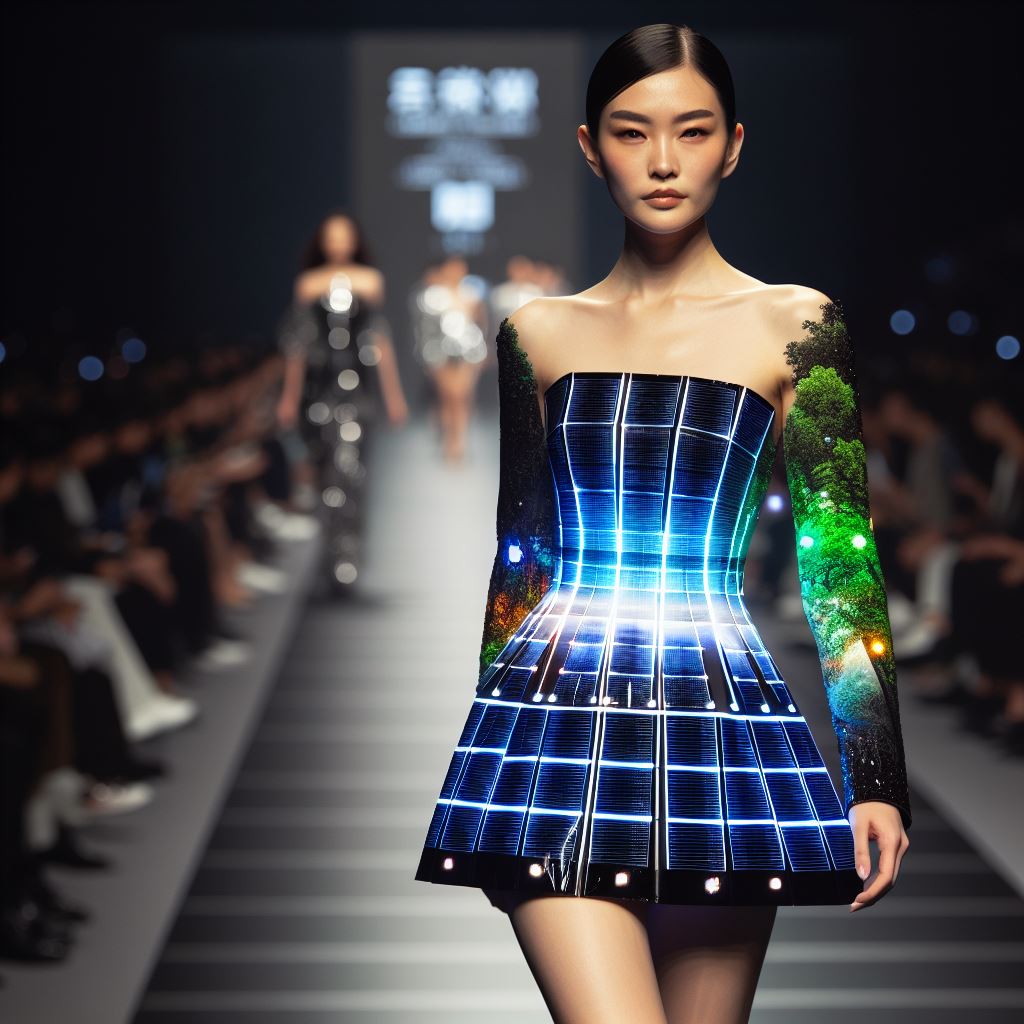
Have you ever wondered about the hidden cost of your wardrobe? In a world relentlessly pursuing sustainable living, the fashion industry stands at a complex crossroad of style and environmental responsibility. With the textile sector accounting for a staggering portion of global energy consumption and carbon emissions, there’s an urgent need for a cleaner, greener approach to what we wear.
Harnessing Alternative Energy in the Fashion
Expanding the horizons of fashion, the integration of alternative energy sources into clothing and accessories marks a captivating convergence of style and technology. Beyond mere trends, the fashion industry now spearheads eco-conscious and sustainable initiatives, envisioning a future where apparel goes beyond aesthetic appeal to actively contribute to the well-being of the planet. The infusion of solar-powered fabrics and kinetic energy harvesting into fashion items is poised to revolutionize our perception and utilization of clothing in our everyday routines.
This innovative approach not only adds a functional dimension to attire but also aligns with the growing global emphasis on environmental responsibility. Solar panels discreetly embedded in garments offer a dual purpose, capturing sunlight to power devices or illuminate clothing, blending fashion with practicality. Simultaneously, kinetic energy harvesting translates movement into power, presenting a novel concept where the act of wearing becomes a sustainable energy source.
Solar-Powered Fabric Pioneers
Step out into the sunlight and know your clothes are doing much more than merely complementing your style — they’re also charging your devices. That’s the potential solar-powered fabric promises. Embedded with fine, flexible solar cells, these innovative textiles possess the ability to convert sunlight into electricity. They’re weaving photovoltaic technology into the very fabric of our clothing, literally.
Designers and scientists are collaborating to create materials that are lightweight, breathable, and efficient at capturing solar energy. One such example is the integration of thin-film solar cells that line garments such as jackets and handbags. These cells are engineered to be unobtrusive, ensuring they don’t hinder the comfort or appearance of the garment. The power these cells generate flows through concealed wiring within the garment, leading to USB ports or battery packs that can charge your personal devices on the go.
This kind of innovation isn’t just a futuristic dream. Several companies have already launched lines of clothing and accessories with solar fabrics, from backpacks that can charge your laptop while you walk to the park, to smart clothes capable of powering health-monitoring devices for those who need them.
The benefits of solar-powered fabrics span beyond convenience and enter the environmentalism. By tapping into the endless energy provided by the sun, we’re able to reduce reliance on fossil fuels, lowering our carbon footprint considerably. Moreover, as technology advances, solar fabrics continue to become more accessible and affordable, paving the way for wide-scale adoption.
Kinetic Energy: The Power of Movement
As we dive deeper into the relationship between energy and fashion, we cannot overlook the electric potential of kinetic energy in wearables. Clothing and accessories that harness kinetic energy operate on a simple yet brilliant premise: to capture the power of your body’s movement and convert it into electrical energy. Every step you take, every movement you make, could be used to power the technology that has become central to modern lifestyles.
Technological strides in the field of piezoelectric materials, which accumulate charge in response to applied mechanical stress, are crucial in this area. Incorporating these materials into the soles of shoes, for instance, can potentially allow you to charge your devices just by walking.
Designs incorporating kinetic energy harvesting are evolving. Some involve intricate systems of gears and springs that capture energy from joint movement, while others use lightweight, flexible fibers woven directly into the textile of the clothing. The potential of these technologies is vast; from lights in runners’ jackets blinking with each stride to watches that never need a battery change because they’re powered by your own movements.
Challenges and Potential Impacts on Sustainable Fashion

While the integration of alternative energy in fashion is brimming with potential, this fusion of technology and textiles isn’t without its challenges. Durability, efficiency, and aesthetics are all critical factors that designers must balance when creating these intelligent garments. The technology embedded within these clothes must endure everyday wear and tear, varying weather conditions, and the rigors of machine washing.
Another challenge lies in marrying form with function — creating pieces that people actually want to wear. The fashion industry thrives on desirability, and for these innovations to truly hit the mainstream, they need to remain on-trend and appealing while being sustainably made.
The potential impact of successfully navigating these challenges is huge, as power-generating fabrics stand to push the fashion industry further along the path of sustainability. As our society continues to advance toward greater environmental awareness, sustainable fashion becomes not just a niche but a necessity. Energy-harvesting clothing can significantly lessen the environmental impact of our wardrobe by using clean energy and encouraging eco-friendly practices.
The celestial body of the sun and the natural movement of people are energy sources that have powered the physical world directly or indirectly for eons. Now, with the science turning more sophisticated and designers getting more innovative, this synergy of solar and kinetic power with fashion is drawing closer to our everyday reality. It points to a future where clothing does more than just express who we are — it begins to reflect and empower how we live our lives, sustainably and interconnected with the world around us.

